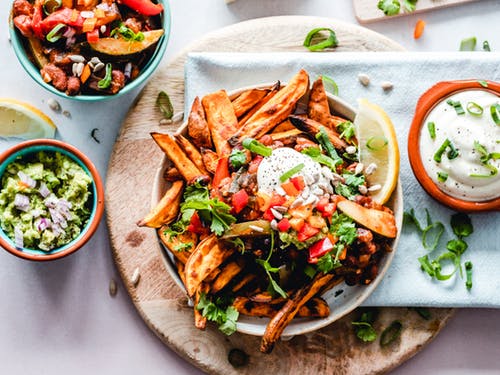WHAT IS THE GLYCEMIC INDEX (GI)?
If you’re one of those folks who can’t stomach all the counting, measuring, adding, and graphing that some diets need, the glycemic index may be the answer. On the other hand, you might find it to be yet more puzzling technique to make the simple process of eating more difficult. The glycemic index is a metric that assesses the nutritional value of carbohydrates. Based on how carbs affect your blood sugar, it’s a good carbs/bad carbs situation. Though it isn’t new, it gained a lot of attention when the anti-carb movement gained traction.
It works like this: pure glucose is arbitrarily awarded a score of 100 in the glycemic index; it doesn’t imply anything; it’s merely a defined reference point for how it has altered blood sugar two hours after eating. Then, for each of the other foods in the index, a number is assigned based on glucose and its impact on blood sugar.
Low-index foods break down slowly and do not produce significant blood sugar changes.
Foods having a high index are more likely to do so. Green peas, for example, have a score of 39, whereas corn flakes have a score of 92. Because protein and fat don’t have much of immediate influences on blood sugar levels. The glycemic index originally intends to help people—particularly diabetics—control their blood sugar.
However, giving numbers to different foods based on their glycemic effect results in a graded list of foods that can be useful for persons struggling with obesity and other health problems. That’s because following a low-glycemic index diet in general tends to lead to healthier eating and weight loss, even if it’s not their primary objective.
Consider:
High-index diets strongly link to type 2 diabetes, as well as many malignancies and cardiovascular disease. There is a lot of evidence that lowering the overall glycemic index lowers the risk of those problems. That’s because a low-index diet will nearly always include more fresh fruits and vegetables, more fiber, and more dairy. All of which provide necessary nutrients, are lower in calories, and tend to keep the body satiated for longer, delaying the next hunger pang. All of this usually leads to weight loss, regardless of the regimen.
Fans of the index argue that it is more useful than counting calories or grams of fats or carbs. It provides a more straightforward method to learning to eat healthier. However other experts warn that people shouldn’t get too caught up in the details.
Instead, they recommend that consumers consider whether the items they eat have a low, medium, or high index. That’s because there are exceptions to the pretty constant physiological criteria that supports the index, just as there are to every rule. Watermelon, for example, has a glycemic index of roughly 75, which is higher than table sugar. Is that to say it’s harmful for you? No. Because, despite its high glycemic index, watermelon has a relatively modest glycemic load. Unlike the index, this is a measure based on the amount of food you’d actually consume, not merely an arbitrary quantity utilized in testing.
Glycemic Load of a Food
We calculate the glycemic load of a food by multiplying the glycemic index value by 100 and multiplying it by the amount of accessible carbohydrate. In most cases, a low index corresponds to a low load, however there are a few notable exceptions like watermelon. In order to discover them, you’d have to do a bunch of arithmetic again, which isn’t how most people eat. That’s why doctors and nutritionists advise people who are attempting to build a healthy diet to look at the foods in the index more broadly. With a preference for those at the low end, rather than getting caught up in the numbers game.
Natural Ways to Avoid Diabetes
How To Choose foods according to glycemic Index
Foods with a glycemic index of more than 70 are high, those with a glycemic index of 55 to 69 are considered medium. Foods with a glycemic index of less than 55 are considered low index foods. Most breakfast cereals, white breads and other processed baked goods, most potatoes, ice cream, candy, and table sugar are all high index foods. They are in fact an Atkins Diet nightmare. Cherries, grapefruit, broccoli, legumes like lentils and beans. Most whole grain baked products, and most dairy meals have a lower score. Even if you don’t count calories or keep track of precise index numbers, focusing your diet on the lower glycemic index will benefit.
Diabetes, and Kidney, Heart attacks and Stroke
We prefer to tell our patients that the glycemic index and glycemic load are just two more tools. They can help them think about and plan their diets in a healthier way. Finally, keep in mind that no single standardized glycemic index list exists. Most indexes include both brand-name and generic items like vegetables and fruits. This is one of the more useful features of the lists, eat according to what you like.


